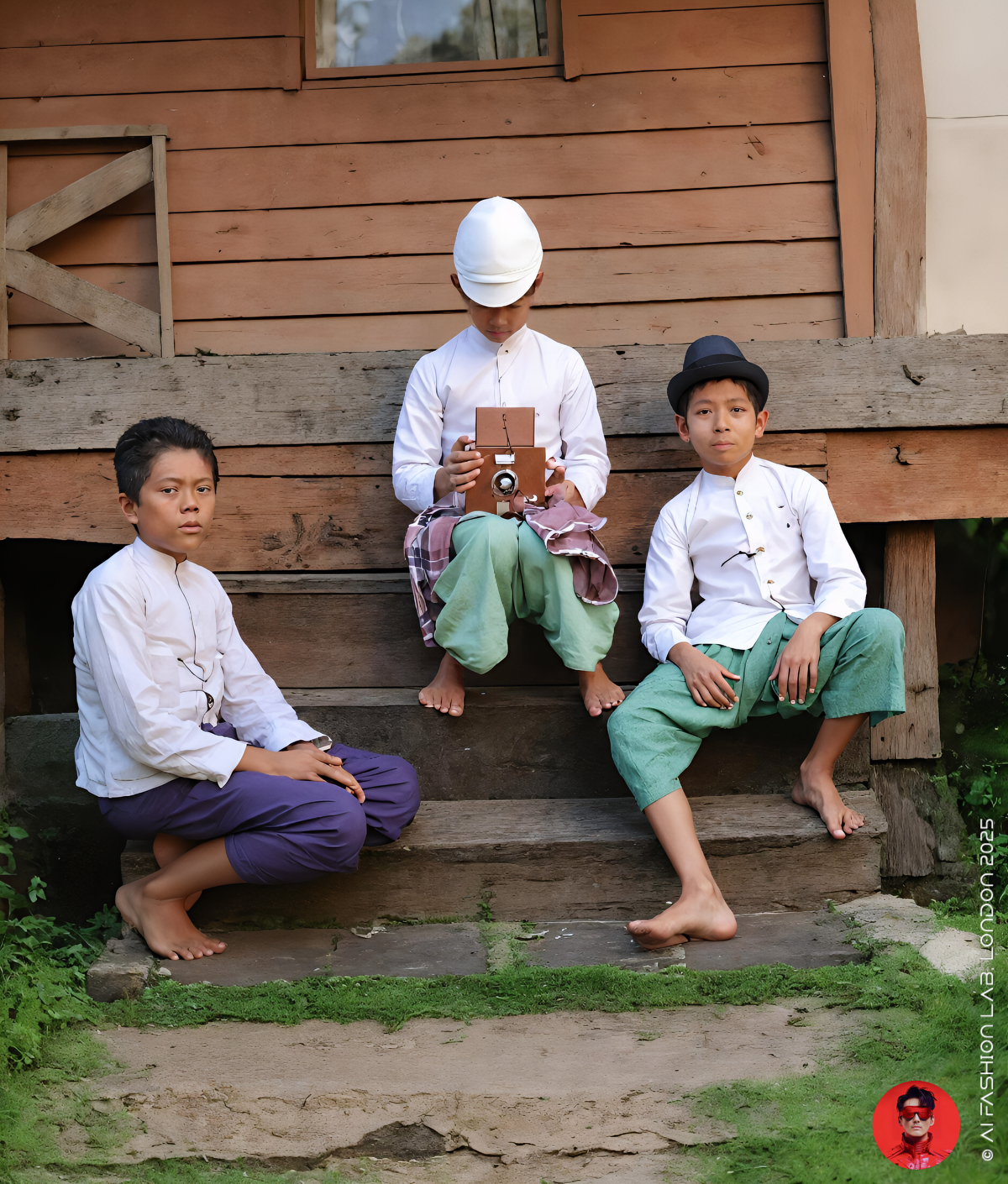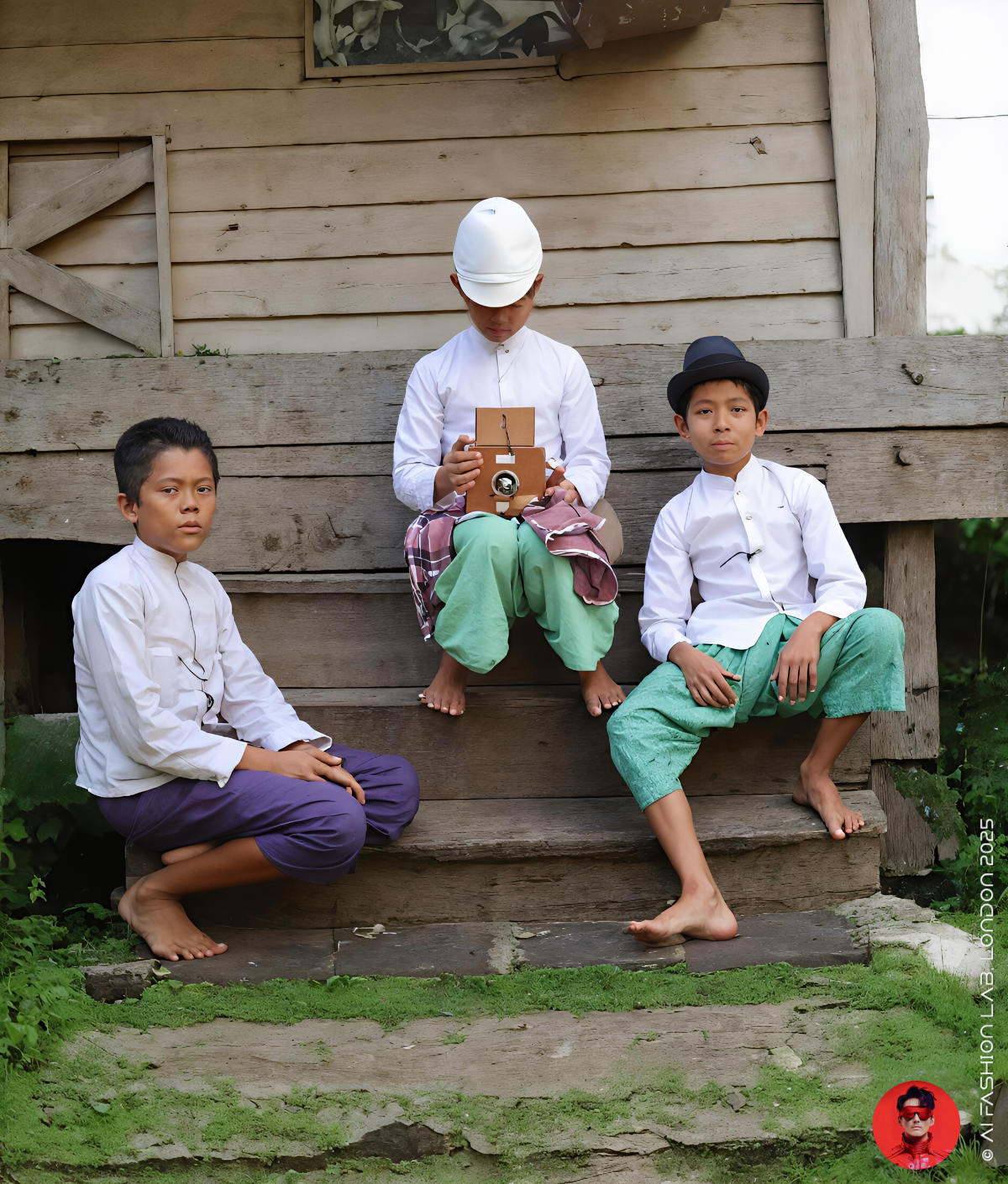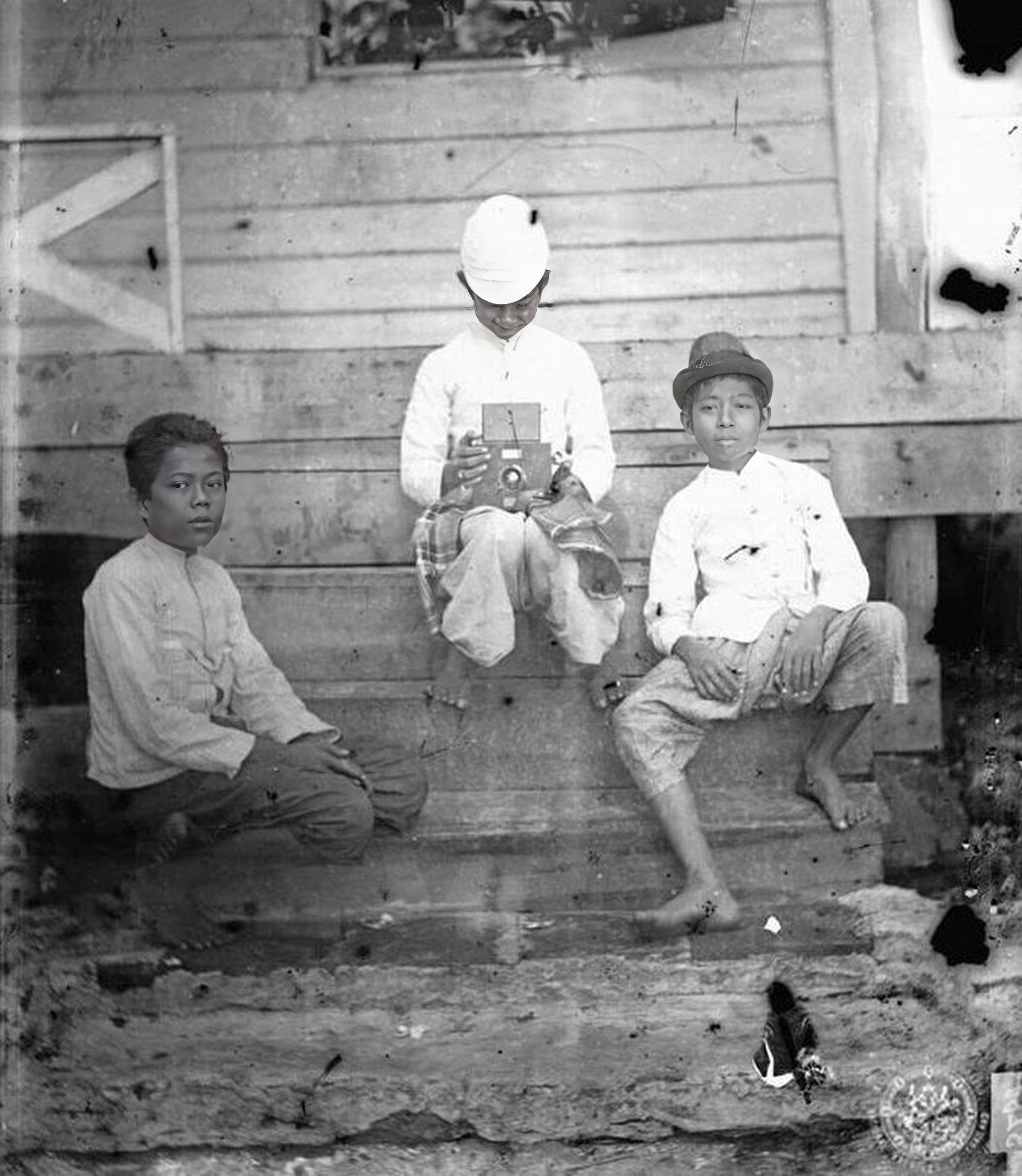พระฉายาลักษณ์ สมเด็จพระบรมโอรสาธิราช เจ้าฟ้ามหาวชิรุณหิศ กับ กล้อง
จุดเริ่มต้นของการถ่ายภาพในประเทศไทย
การถ่ายภาพได้เข้าสู่ประเทศไทยเป็นครั้งแรกเมื่อราวปี พ.ศ. 2388 ในช่วงปลายรัชกาลที่ 3 ซึ่งเป็นเวลาเพียงไม่กี่ปีหลังจาก หลุยส์ เจ. เอ็ม. ดาแกร์ นักประดิษฐ์ชาวฝรั่งเศส ได้คิดค้นกระบวนการถ่ายภาพแบบ "ดาแกโรไทป์" ขึ้นในปี พ.ศ. 2382 การที่เทคโนโลยีตะวันตกนี้เดินทางมาถึงสยามอย่างรวดเร็วนับเป็นสิ่งสะท้อนถึงความเปิดรับสิ่งใหม่ของประเทศในยุคนั้น
บุคคลแรกที่นำการถ่ายภาพเข้ามาในสยามคือ พระสังฆราชปาเลอกัว (Jean-Baptiste Pallegoix) บาทหลวงคาทอลิกชาวฝรั่งเศส ซึ่งเดินทางมาเผยแผ่ศาสนาในประเทศไทยในรัชสมัยของพระบาทสมเด็จพระนั่งเกล้าเจ้าอยู่หัว (รัชกาลที่ 3) และพระบาทสมเด็จพระจอมเกล้าเจ้าอยู่หัว (รัชกาลที่ 4) ท่านนำวิทยาการการถ่ายภาพด้วยแผ่นเงินเข้ามาเป็นครั้งแรกในประเทศไทย อย่างไรก็ตาม ความเชื่อของคนไทยในขณะนั้นยังไม่เปิดรับการถ่ายภาพ ด้วยมีความเชื่อว่าสามารถทำให้ผู้อยู่ในภาพอายุสั้น หรืออาจถูกนำภาพไปใช้ในทางไสยศาสตร์ได้
จนกระทั่งในรัชกาลที่ 4 พระองค์ทรงเป็นกษัตริย์ไทยพระองค์แรกที่ทรงยอมให้บันทึกพระบรมฉายาลักษณ์ การสนับสนุนของพระองค์ส่งผลให้การถ่ายภาพเริ่มเป็นที่ยอมรับในหมู่ชนชั้นสูง และต่อมาจึงแพร่หลายสู่ประชาชนทั่วไป
ในปี พ.ศ. 2408 จอห์น ทอมสัน (John Thomson) ช่างภาพชาวสก๊อต ได้เดินทางมาถึงเอเชียพร้อมกล้องถ่ายภาพแบบแผ่นเปียก และได้บันทึกภาพชีวิตประจำวันของชาวสยาม รวมถึงพระราชพิธีโสกันต์ของพระบาทสมเด็จพระจุลจอมเกล้าเจ้าอยู่หัวด้วย เมื่อพระองค์เสด็จประพาสยุโรปในปี พ.ศ. 2450 จอห์น ทอมสันได้นำภาพเหล่านี้ขึ้นทูลเกล้าฯ ถวายเป็นที่ระลึก
หนังสือพิมพ์ สยามประเทศ ฉบับวันที่ 11 เมษายน พ.ศ. 2444 ยังกล่าวถึงเหตุการณ์ที่ พระยาไทรบุรี ได้ส่งพระฉายาลักษณ์ของ สมเด็จพระราชินีนาถวิกตอเรีย แห่งอังกฤษมาทูลเกล้าฯ ถวายรัชกาลที่ 3 แต่พระองค์ไม่ทรงเชื่อว่าเป็น “ภาพถ่ายจริง” ต่อมาได้นำภาพนั้นไปติดไว้ที่ท้องพระโรงพระที่นั่งอมรินทรวินิจฉัย โดยชาวบ้านเรียกภาพนั้นว่า "รูปเจ้า วิลาด" และในปี พ.ศ. 2398 เมื่อเซอร์จอห์น เบาริง เดินทางเข้ามาเจริญพระราชไมตรี ภาพดังกล่าวจึงกลายเป็นที่รู้จักอย่างเป็นทางการ และถือเป็นภาพถ่ายรูปแรกในเมืองไทย
ผู้บุกเบิกวงการถ่ายภาพในสยาม
บุคคลไทยคนแรกที่สามารถถ่ายภาพได้สำเร็จคือ พระยากระสาปนกิจโกศล (นายโหมด อมาตยกุล) ซึ่งมีบรรดาศักดิ์ขณะนั้นว่า พระวิสูตรโยธามาตย์ หนังสือ Philadelphia Photographer ฉบับปี พ.ศ. 2408 ซึ่งคุณเอนก นาวิกมูล ได้ค้นพบในปี พ.ศ. 2526 ระบุว่า เมื่อพระนางเจ้าวิคตอเรียแห่งอังกฤษส่งชุดอุปกรณ์ถ่ายภาพมาถวายรัชกาลที่ 4 พระวิสูตรผู้นี้สามารถใช้กล้องดังกล่าวถ่ายภาพได้สำเร็จ แม้จะไม่รู้ภาษาอังกฤษเลยก็ตาม และยังได้ฝากภาพถ่ายของเมืองไทยไปกับคณะมิชชันนารีเพื่อนำเสนอแก่หมอเฮาส์ที่อเมริกา บทความดังกล่าวชื่นชมความสามารถของชาวไทยว่าแม้จะอยู่ห่างไกลจากโลกตะวันตก แต่ก็สามารถใช้เทคโนโลยีถ่ายภาพได้อย่างน่าประทับใจ
ผู้ที่มีบทบาทสำคัญอื่น ๆ ในยุคนั้น ได้แก่
พระปรีชากลการ (นายสำอาง อมาตยกุล) บุตรของพระยากระสาปนกิจโกศล
หลวงอัคนีนฤมิตร (นายจิตร จิตราคนี) ผู้เรียนถ่ายภาพจากบาทหลวง ลาร์นอดี และ จอห์น ทอมสัน ต่อมาได้เป็นช่างภาพหลวงในสมัยรัชกาลที่ 4 และ 5 และได้ตั้งร้านถ่ายภาพแห่งแรกของไทยในปี พ.ศ. 2406 บริเวณเรือนแพหน้าวัดกุฎีจีน (ปัจจุบันคือวัดซางตาครู้ส) ชื่อร้าน Francis Chit & Son ร่วมกับบุตรชายชื่อ ทองดี ภาพถ่ายของท่านมีเอกลักษณ์คือโทนสีเหลืองหรือน้ำตาลและความไม่คมชัดเนื่องจากน้ำยาอัดภาพในยุคนั้น
แม่สร้อย น้องสาวของหลวงอัคนีนฤมิตร ถือเป็นช่างภาพหญิงคนแรกของไทย
จากบันทึกของ สมเด็จกรมพระยาดำรงราชานุภาพ กล่าวถึงนายจิตรว่าเป็นหนึ่งในผู้ที่รับวิชาความรู้จากต่างชาติในรัชกาลที่ 4 และได้รับราชการ ได้รับแต่งตั้งเป็น ขุนฉายาทิศลักษณ ก่อนเลื่อนเป็น หลวงอัคนีนฤมิตร และดำรงตำแหน่งเจ้ากรมแก๊สหลวง
กรมหมื่นอลงกฎกิจปรีชา พระเจ้าน้องยาเธอในรัชกาลที่ 4 ผู้เป็นต้นราชสกุล "นิลรัตน์" ก็ทรงมีบทบาทสำคัญในวงการถ่ายภาพ โดย จอห์น ทอมสัน กล่าวถึงพระองค์ว่าทรงมีน้ำพระทัยดีและสนพระทัยในศาสตร์แห่งการถ่ายภาพอย่างจริงจัง
ยุคแห่งความรุ่งเรืองของการถ่ายภาพในรัชกาลที่ 5
ในรัชสมัยของพระบาทสมเด็จพระจุลจอมเกล้าเจ้าอยู่หัว วงการถ่ายภาพเจริญรุ่งเรืองอย่างยิ่ง ร้านถ่ายภาพผุดขึ้นมากมาย พระองค์ทรงมีความสนพระราชหฤทัยเป็นพิเศษ ทรงซื้อกล้องหลายชุดไว้ใช้ส่วนพระองค์ และทรงนำกล้องติดพระหัตถ์ไปเสด็จประพาสในทุกครั้ง
ในปี พ.ศ. 2447 มีการจัดแสดงและประกวดภาพถ่ายเป็นครั้งแรกของประเทศไทย ในงานไหว้พระพุทธชินราช ณ วัดเบญจมบพิตร ภาพที่นำมาแสดงมีทั้งภาพพิมพ์บนกระดาษ และภาพบนแผ่นกระจกที่ต้องใช้ถ้ำมอง (Taxiphote) ในการชม
ในวังหลวง เจ้าจอมเอิบ และ เจ้าจอมเอื้อน สองพี่น้องต่างมีฝีมือด้านการถ่ายภาพ ทั้งการถ่ายและการล้างอัดภาพด้วยตนเอง โดยในงานประกวดภาพครั้งนั้น ภาพของเจ้าจอมเอื้อนได้รับคะแนนเป็นลำดับที่ 15 เฉือนเจ้าจอมเอิบไปเพียงเล็กน้อย
พัฒนาการทางเทคนิคในรัชกาลที่ 6
ในสมัยรัชกาลที่ 6 ฉากหลังของภาพถ่ายได้เปลี่ยนจากพื้นหลังเรียบ ๆ มาเป็นฉากวิวทิวทัศน์ เช่น ป่าไม้ สวนดอกไม้ ห้องรับแขก หรือท้องพระโรง นอกจากนี้ยังมีการใช้แสงไฟในการถ่ายภาพ ซึ่งเริ่มใช้ครั้งแรกที่โรงเรียนเพาะช่าง ก่อนจะแพร่หลายไปทั่วประเทศ ทำให้สามารถถ่ายภาพได้ทั้งในเวลากลางวันและกลางคืน
บทบาทของภาพถ่ายในชีวิตไทย
ปัจจุบัน การถ่ายภาพพัฒนาไปอย่างรวดเร็ว มีเทคโนโลยีใหม่ ๆ เกิดขึ้นอยู่เสมอ และกลายเป็นส่วนหนึ่งของชีวิตประจำวัน ภาพถ่ายช่วยในการบันทึกเหตุการณ์ ถ่ายทอดเรื่องราว และสร้างความทรงจำให้กับผู้คนในวงกว้างได้อย่างรวดเร็วและลึกซึ้ง
ภาพประกอบ
พระฉายาลักษณ์ลงสีด้วย AI นี้ แสดงให้เห็น สมเด็จพระบรมโอรสาธิราช เจ้าฟ้ามหาวชิรุณหิศ สยามมกุฎราชกุมาร (ประทับกลาง) ทรงถือกล้องถ่ายรูป พระฉายาลักษณ์ถ่ายราว พ.ศ. 2430 เป็นหลักฐานสำคัญที่สะท้อนว่า พระองค์ทรงมีส่วนเกี่ยวข้องกับวิทยาการถ่ายภาพตั้งแต่ในช่วงแรกเริ่มของสยาม และสะท้อนบทบาทของราชสำนักในการนำเทคโนโลยีสมัยใหม่เข้าสู่สังคมไทย
The Origins of Photography in Thailand
Photography was first introduced to Thailand around 1845, during the final years of King Rama III’s reign. This was only a few years after the invention of the daguerreotype by Frenchman Louis J.M. Daguerre in 1839. The fact that this new Western technology reached Siam so quickly demonstrates how remarkably modern the country was for its time.
The first person to bring photographic knowledge to Thailand was Jean-Baptiste Pallegoix, a French Catholic bishop who came to Siam as a missionary during the reigns of King Rama III and King Rama IV. Bishop Pallegoix introduced early photographic techniques and is believed to have created the earliest silver plate photographs in the kingdom. However, photography was not immediately popular among the Thai people due to superstitions that having one’s image captured could shorten one’s life or be used for sorcery.
This fear persisted until the reign of King Mongkut (Rama IV), who became the first Thai monarch to allow a photographic portrait to be taken. His endorsement helped legitimise photography among the upper classes and eventually inspired broader public acceptance.
In 1865, John Thomson, a British photographer, travelled to Southeast Asia with his wet plate camera and documented daily life in Siam. Among his notable works is a photograph of the royal topknot-cutting ceremony of the young King Chulalongkorn (Rama V). When King Chulalongkorn toured Europe in 1907, Thomson later presented these photographs to His Majesty.
An early Thai newspaper, Siamese Chronicle, published on 11 April 1901, recounts how Phraya Saiburi had sent a photograph of Queen Victoria to King Rama III, though the King reportedly did not believe it was an actual photograph. That image was later displayed in the Amarin Winitchai Throne Hall and known among locals as the "Portrait of Lady Wilat". It was eventually moved to another location ahead of the 1855 visit by Sir John Bowring, the British envoy who signed a treaty of amity and commerce with Siam. This image is considered the first photographic portrait seen in the kingdom.
Early Thai Photographers and Pioneers
One of the first Thai individuals to successfully take photographs was Phraya Krasapakan Kittikoson (also known as Mr. Mod Amatyakul), who held the noble title Phra Wisut Yothamat at the time. A 1865 article in the Philadelphia Photographer, later uncovered by Thai historian Anek Nawikamun in 1983, states that when Queen Victoria sent a full set of photographic equipment to King Rama IV, Phra Wisut was able to operate the camera despite not knowing English. He even sent photographs of Siam to American missionary Dr. House. The article praised Thai ingenuity and resourcefulness in such a remote land.
Other notable figures in early Thai photography include:
Phra Preechakonkan (Mr. Sam-ang Amatyakul), the son of Phraya Krasapakan Kittikoson.
Luang Akkhaninimitr (Mr. Chit Chitrakanee), who studied photography under French missionary Abbé Larnaudie and British photographer John Thomson. He was later appointed court photographer during the reigns of Rama IV and Rama V. In 1863, he opened Thailand’s first commercial photography studio, Francis Chit & Son, with his son Thongdee. The studio was located on a floating house near Kudi Chin in Thonburi, present-day Santa Cruz Church. His photographs are recognisable by their yellow or brown tones and softer focus, due to the photographic chemicals used at the time.
Thailand’s first female photographer is believed to be Mae Soi, the younger sister of Mr. Chit.
According to Prince Damrong Rajanubhab, Mr. Chit was among the early Siamese who studied modern knowledge from foreigners and entered royal service under King Rama IV. He was first granted the noble title Khun Chaiyathitlak, later elevated to Luang Akkhaninimitr, and eventually became director of the Royal Gasworks Department.
Another early royal photographer was Prince Alongkot Kitpricha, half-brother of King Rama IV and founder of the Nilrat family. John Thomson praised him as a gracious and generous host with a genuine interest in photography.
The Rise of Photography During King Rama V’s Reign
During King Chulalongkorn’s reign, photography flourished, and photo studios became increasingly common. The King himself was deeply interested in photography—he personally owned multiple cameras and often brought them on his travels. In 1904, the first public photography exhibition and competition in Thailand was held during the royal pilgrimage to pay homage to Phra Phuttha Chinarat at Wat Benchamabophit. The exhibition featured both paper prints and glass plate images that could be viewed using a taxiphote stereoscope.
Women in the royal court, such as Chao Chom Eab and her sister Chao Chom Euan, were skilled amateur photographers. They developed and printed photographs themselves. At the 1905 Wat Benchamabophit exhibition, Chao Chom Euan’s entry ranked 15th, narrowly beating Chao Chom Eab’s photo, which placed 18th.
Technical Developments and Popular Culture
During the reign of King Vajiravudh (Rama VI), photographic backdrops evolved from plain backgrounds to more elaborate scenes such as landscapes, gardens, palace interiors, and reception halls. Artificial lighting was also introduced, initially at Poh Chang School of Arts and Crafts, and soon became popular for enabling photography in both daylight and nighttime settings.
Photography continued to develop rapidly and soon became a part of everyday life in Siam. It enabled people to preserve memories, document events, and share stories in an accessible and enduring format.
Featured Image:
This colourised photograph shows Somdet Phra Boromma-ora-sathirat Chao Fa Maha Vajirunhis, Crown Prince of Siam (seated at centre), holding a camera—taken circa 1887 (2430 BE). It is a rare glimpse into the Crown Prince’s exposure to modern technology and his role in the early days of photography in Siam.
#aifashionlab #AI #aiartist #aiart #aifashion #aifashiondesign #aifashionstyling #aifashiondesigner #fashion #fashionhistory #historyoffashion #fashionstyling #fashionphotography #digitalfashion #digitalfashiondesign #digitalcostumedesign #digitaldesign #digitalaiart #ThaiFashionHistory #ThaiFashionAI



